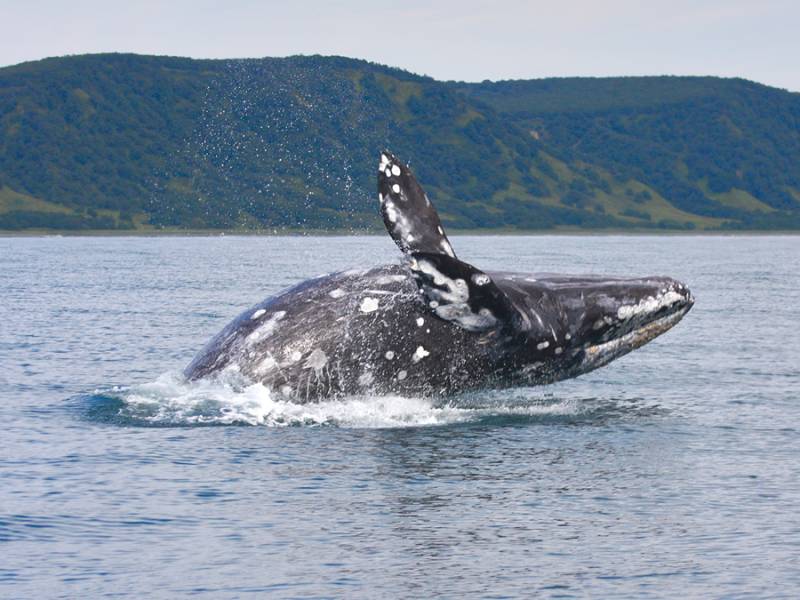

The press service of the Kronotsky Nature Reserve has reported on the results of a study of endangered gray whales conducted by scientists from the A.N. Severtsov Institute of Ecology and Evolution (IPEE RAS). For several years, they have been collecting biopsy samples from whales in the coastal waters of Sakhalin, Kamchatka, and Chukotka. This time, the turn came to the Kronotsky Bay.
In September, IPEE RAS employees conducted research in the northern part of the Kronotsky Bay. From fresh photographs, they identified 20 gray whales. Researchers observed daily how these animals fed and moved around the bay. Many of the animals they had previously encountered in Sakhalin.
As part of a large-scale study, scientists collected samples of skin and subcutaneous fat from animals in different feeding grounds, and then sent them to the laboratory for lipid and isotopic analysis. The results showed that gray whales, which feed in different areas, due to the natural characteristics of the locations, eat different foods to accumulate fat reserves.
"The results of laboratory studies have shown that in Chukotka, food chains are longer, i.e., they include more elements. Gray whales there feed mainly on several types of amphipods and sandfish. In Kamchatka and Sakhalin, food chains are shorter, and the whales' diet is dominated by other types of crustaceans, specific types of polychaete worms, and bivalve mollusks," the report says.
Specialists also found that gray whales in Chukotka have more successful feeding. This is evident from the higher lipid content in fat samples. Samples from Kamchatka, on the other hand, are characterized by a high content of cholesterol esters, which is associated with differences in diet and the body's internal needs for storing these particular lipids in Kamchatka.
Scientists were able to confirm the close connection between different feeding grounds in the North Pacific Ocean. Now they need to determine the degree of fatness of whales from photographs, which will make it possible to find out how successfully they were able to accumulate fat this year before migrating to wintering and breeding grounds. Specialists will also compare the success of whale feeding in different areas.
The research was conducted jointly with the Kamchatka branch of the Pacific Institute of Geography of the Far Eastern Branch of the Russian Academy of Sciences, the Chukotka Arctic Research Center, and the Institute of Biology of the Karelian Scientific Center of the Russian Academy of Sciences.
 Blogs
Blogs
